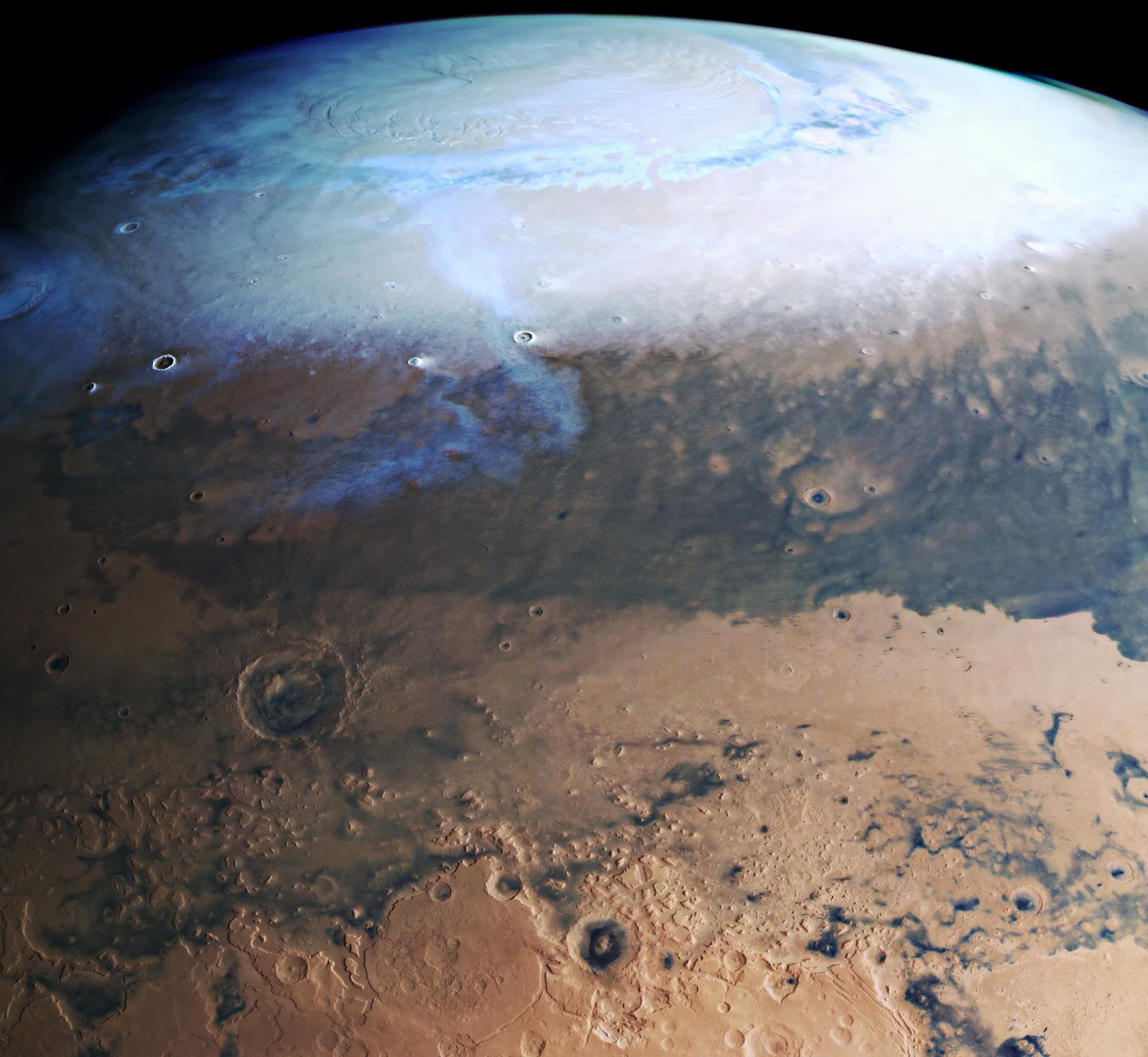[ad_1]
Why it matters: Launched in 2003, the Mars Express orbiter made history as the first true planetary mission of the European Space Agency (ESA). The mission’s original objective focused on the search for subsurface water from its orbit around the Red Planet. Twenty years and several mission extensions later, ESA celebrated the spacecraft’s anniversary with the first-ever “livestream from Mars,” beaming near-real-time images of our planetary neighbor from over 186 million miles away.
The spacecraft, consisting of the orbiter and the Beagle-2 lander, was dubbed “Express” due to the close proximity between Earth and Mars at the time of its launch. The orbits of the two planets had brought them closer together than they had been in more than 60,000 years.
Unfortunately, the Beagle-2 lander failed to deploy properly in December 2003 and was later discovered by NASA’s Mars Reconnaissance Orbiter to be intact but inoperable. The orbiter, however, safely reached its destination and began providing ESA researchers with valuable high-resolution imaging and mineralogical mapping of Mars’ surface.
One of the challenges of managing equipment located 186 million miles away is the difficulty in adding or modifying its functionality. Fortunately, the Mars Express team identified new ways to repurpose the craft’s existing instruments. Over the past several months, they have been developing and preparing the tools needed to make the livestream possible.
The broadcast on June 2nd captivated viewers with an hour of real-time images captured by the probe’s Visual Monitoring Camera (VMC). The VMC was originally designed as an engineering instrument to document the Beagle 2 lander’s separation. However, after the lander’s failed deployment, the camera was briefly turned off. It was then reactivated in 2007 to serve as an educational, outreach, and observational tool.
The repurposing of the camera, along with its other existing instrumentation, has reaped substantial benefits for the Mars Express team. Over the course of its two-decade orbit around the Red Planet, the mission has identified methane in the planet’s atmosphere, discovered ice at both of its poles, and even detected a potential salty lake beneath the planet’s south pole.

The durability of the craft and the versatility of its instrumentation have led to several mission extensions for the orbiter. The most recent extension was approved in March 2023 and is set to remain active until December 2026. This will grant several more years to contribute to the ESA’s Mars research and observational initiatives.
[ad_2]
Source link